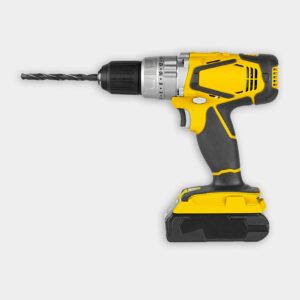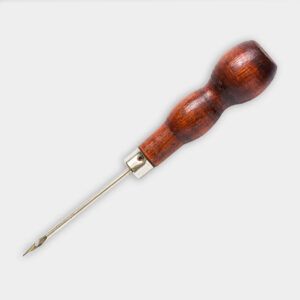Misplaced gloves can amount to huge headaches, especially when you need to complete a project on a deadline. Building your own work glove holder can help you to keep this protective work gear accounted for, and keep your workspace organized. Read our guide to learn how to build, maintain, and even decorate your own work glove holder below.
Benefits of a DIY Work Glove Holder
A work glove holder keeps your gloves in a single location, maximizes your workspace, and extends the lifespans of your gloves. You can customize your holder to fit your tastes, and add or remove clamps as your collection of gloves grows.
Tools and Materials
You’ll need the following tools and materials for your do-it-yourself glove holder:
- Awl
- Drill with a small bit
- Nail or hook for hanging
- Scissors
- Spring clamps
- Strong string or thin rope
Step-by-Step Guide to Building a Work Glove Holder
Follow the steps below to build your work glove holder:
1. Prepare the Spring Clamps
Drill a small hole into one side of each spring clamp. You’ll later thread string through this hole to connect all of your clamps.
2. Thread the String
- Cut a string that’s long enough to accommodate all of your clamps, and leave extra for hanging.
- Use an awl to guide the string through the hole in each clamp.
- Feed the string through all the clamps, and leave enough slack between each to allow for easy movement.
3. Secure the Clamps
- Fold the string over each clamp to hold it in position.
- Adjust the spacing between clamps.
- Tie a secure knot at the top of the string to create a loop that you can use to hang your holder.
4. Attach Gloves and Hang
Clip each pair of gloves onto a spring clamp. Hang the entire assembly on a nail or hook in your workspace.
Enhancing Your Glove Holder Design
Consider adding the enhancements below to improve the visual appeal and efficiency of your glove holder:
- Additional hooks and holders: Add more hooks and holders to your design with which you can store keys, small tools, or other frequently used items in your workspace.
- Decorative elements: Decorate your glove holder by painting the clamps or string to match the color of your workshop or garage.
- Interchangeable clamps: Use interchangeable clamps in different sizes to accommodate various types of gloves and tools.
- Weatherproofing: Make your holder out of weatherproof materials if you plan to use it in an outdoor or damp environment.
Addressing Common Issues
Building a work glove holder is a relatively simple project, but you might still encounter a few challenges along the way. Here’s how to address some common issues:
- Issues threatening the string: Use an awl or needle to thread the string smoothly through the holes. This reduces the risk of fraying or tangling.
- Limited spaces for clamps: Leave slack in the string so that you can adjust the clamps. This will help you to maintain even spacing and accommodate different glove sizes or quantities.
- Misaligned holes: If you have trouble drilling precise holes, secure the clamps with a clamp or vise while you drill.
Tips for Maximizing Your Work Glove Holder
Color-code the clamps on your holder, and organize them by related tasks or materials. This will make it easier to locate the right pair of gloves quickly. Label each clamp with the corresponding glove type or intended use. Regularly inspect and clean your gloves before storing them to keep them in good condition. Position the holder near your workbench or tool storage area for convenient access, and create multiple holders for different work areas or family members.
Maintaining Your Work Glove Collection
Follow the steps below to extend the lives of your gloves:
- Allow wet or damp gloves to dry completely before you store them.
- Clean gloves according to manufacturers’ instructions after each use.
- Repair small tears or holes immediately to prevent further damage.
- Replace gloves as soon as they show signs of significant wear or damage.
- Store gloves away from direct sunlight and heat sources to prevent material degradation.
Alternative Glove Storage Solutions
The spring clamp method is efficient and cost-effective, but there are other ways to store work gloves. Consider the alternate solutions below.
- Drawer organizers: Use drawer organizers to separate gloves within drawers. This protects gloves from damage and helps you to maintain a clutter-free workspace. Use adjustable dividers to customize the layout based on glove sizes or types.
- Magnetic strips with metal components: Install magnetic strips in a convenient spot, such as near your workbench, to reduce clutter and make the most of your vertical space.
- Mesh or wire baskets: These baskets offer flexible, ventilated storage options for multiple pairs of gloves. Select sturdy baskets that are easy to reach, and label them for better organization.
- Over-the-door shoe organizers: Organizers with clear pockets maximize vertical space and provide ample storage. They are perfect for small areas, and you can easily reposition them.
- Wall-mounted hooks or pegs: Use hooks or pegs to keep your gloves visible and accessible. Choose hooks that have bases that are wide enough for different glove sizes.
Using Spring Clamps for Additional Organization
You can use the spring clamp method to store other items, including those below.
- Children’s mittens and gloves: The spring clamp system keeps children’s mittens and gloves organized and accessible. Hang the holder in a mudroom or entryway where kids can grab their gloves before heading outside.
- Cleaning cloths or rags: Clip cleaning cloths or rags with spring clamps so that they’re easy to access. Use designated holders for each type of cloth or rag, and hang them in your cleaning supply area for quick access.
- Garden tools: Use the spring clamp method to store small garden tools such as trowels and pruners. Use larger clamps or adjustable sizes to fit different tool handles, and add labels so you can quickly identify each tool.
- Paint brushes: Store paint brushes by clipping them with spring clamps. This will prevent bristles from becoming misshapen. Use separate clamps for each brush type or size, and keep them in a well-ventilated area to extend their lifespans.
- Small hand tools: Use a spring clamp system to organize small hand tools such as screwdrivers or pliers. Arrange clamps according to tool type, and secure the clamps to prevent tools from falling.


